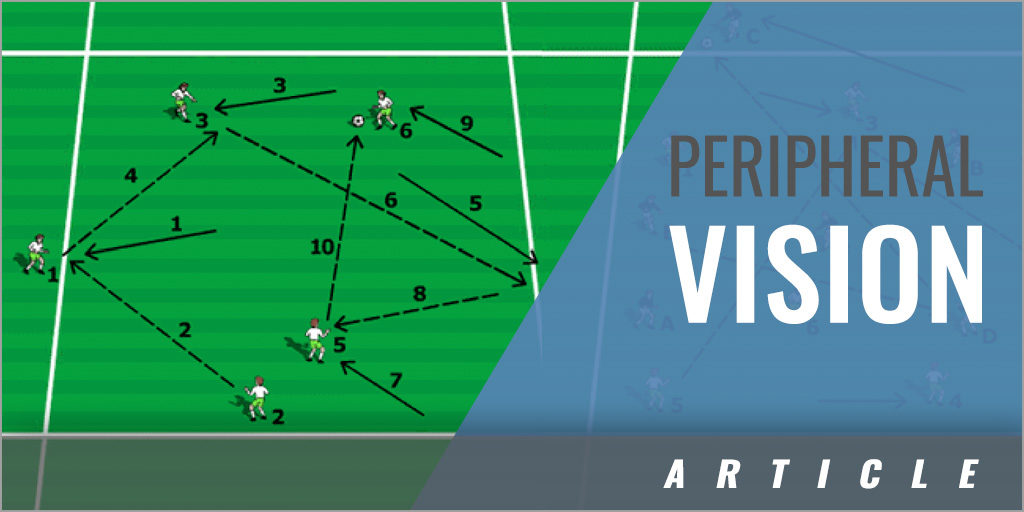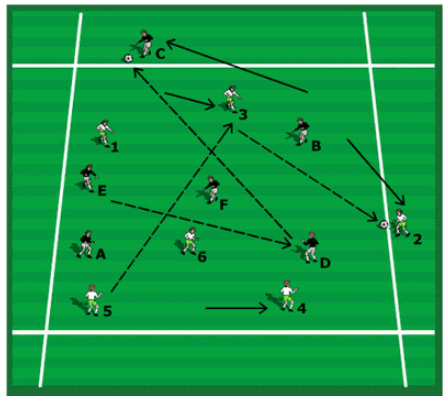|
By: Wayne Harrison Provided by: Amplified Soccer The following drill comes from the Soccer Awareness Training Center. Soccer Awareness Training Center provides unlimited access to Wayne Harrison's Soccer Awareness systems, training sessions, drills and more. Wayne's system helps develop world class youth soccer players and teams in a systematic and imaginative manner that guarantees performance at the highest level of competition. Whether you're a beginning coach who needs help getting started or someone who wants to add some variety to their training sessions, the Soccer Awareness Training Center offers a wide variety of drills to choose from. Join Today The following activity can be used to improve the overall game awareness of individuals within a team concept. Set Up: A 40x30 area is organized as shown in Diagram (a) below. Six players are used within the activity. Repeat the setup to accommodate the entire team. Objective:
Why is developing Specific Peripheral Vision Important? This session is an indicator of how quickly players recognize the "correct run off the ball" by a teammate and consequently they make the "correct pass". Hence players are beginning to look one and two moves ahead of the ball. The run can be likened to a penetrating run into the attacking third where the player hasn't been picked up or tracked and is in a great position to attack and score if the passer sees them and makes that pass. Coaching Points:
Coach's Notes: Further development, ideas and ideals of this practice leading to the introduction of defenders as opposition but in an attacking overload situation. Within the zone there are many choices of pass but as soon as a player makes the run outside that is "the" pass to make. Coach can determine the tempo of the game e.g. to avoid too many running out at the same time the coach can signal to an individual player to move out without the others knowing so only one at a time goes out. Once the free player is outside and waiting for a pass see how many passes are made inside the zone before someone sees the right pass i.e. to the outside player. This is an indication of which players play with their heads up (and hence have good peripheral vision) and which don't, (hence have poor peripheral vision or even none at all). The fewer touches on the ball the player needs to get the ball there the greater their anticipation of the run. (One touch is the ultimate aim to develop whereas the ball is traveling to the player, at the same time another player makes their run out; they see the run and make the pass at the same time). More touches means more reaction time needed and in a game situation this may mean the player being caught in possession before they get around to making the pass.
Here we have two teams playing in the same area, player (5) passes to player (3). Player (2) as the ball is traveling runs outside the area, player (3) has to see this movement and make the next pass to that player. If (3) makes it with a one touch pass that is excellent as it shows they have seen the run as the ball is arriving and made the quickest pass possible to get the ball to (2). Player (2) then brings the ball back into play and the passing sequences start again. Likewise, player (E) on the other team passes to player (D), player (C) runs out of the area and the set up continues. |









